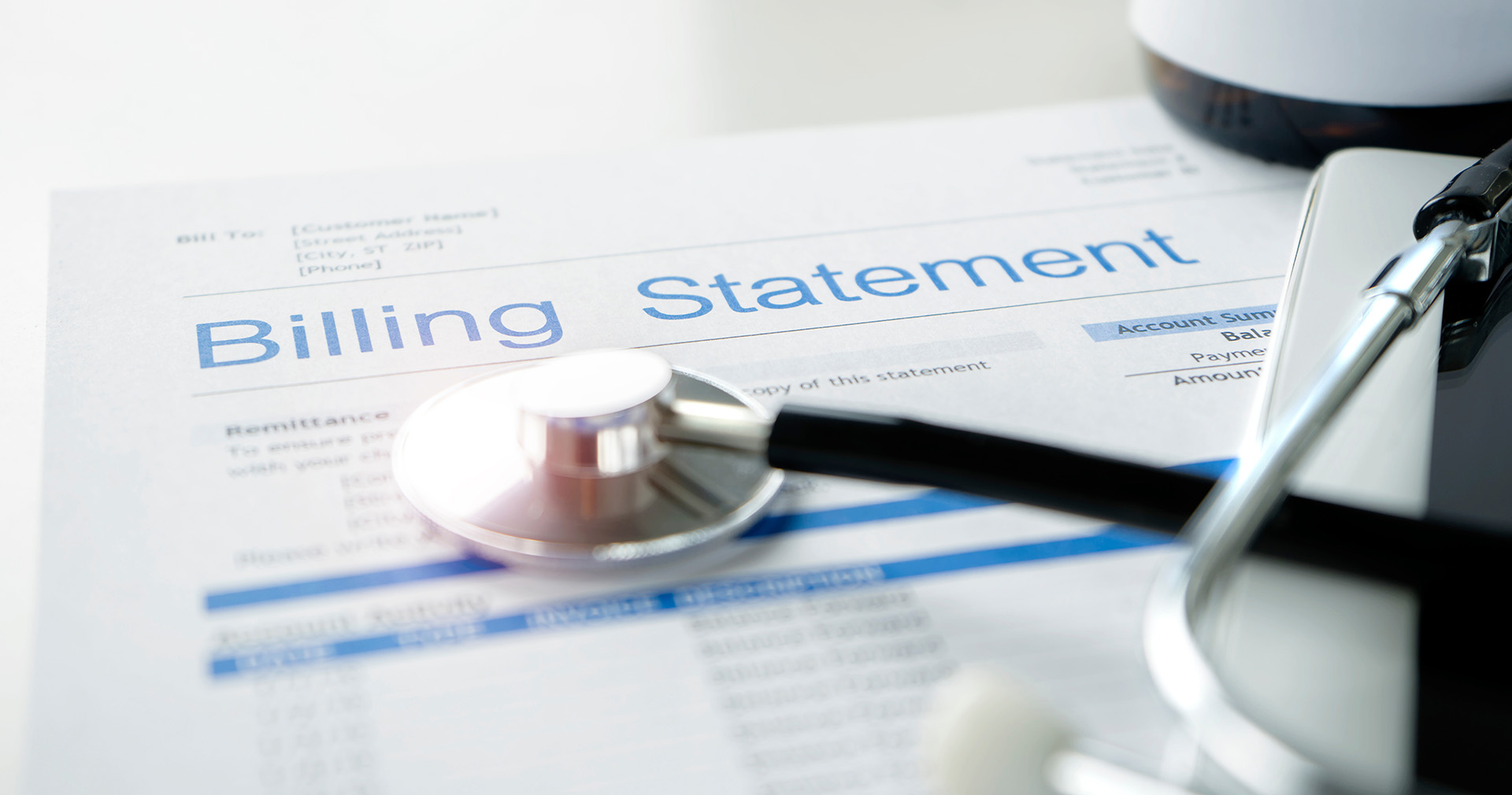The Benefits of Integrated Medical Billing in EHR Software

Are claim form errors and missed claims submission deadlines keeping you awake at night?
You’re not alone. One study reveals billing is one area healthcare providers often stress over the most. And without advanced revenue management tools, you may repeat the same billing mistakes without realizing them, leading to errors, denials, compliance issues, and lost income.
Integrating medical billing in electronic health record (EHR) software is a game-changing solution for improving billing, coding practices, and boosting your revenue cycle.
This article reveals the real-world benefits of integrating medical billing with an EHR and highlights why it’s indispensable for your practice.
Understanding Medical Billing EHR Software Integration
In traditional medical practices, clinical and financial operations often look like this: The physician focuses on patient care while the billing staff handles financial operations. The result? When systems and departments don’t connect, it costs practices both time and money.
For example, providers will need additional billing software or to hire more staff:
-
The median annual salary for medical billers and coders is $48,780, according to the U.S. Bureau of Labor Statistics (BLS).
-
The American Academy of Professional Coders (AAPC) reveals the average income for medical coders with advanced credentials exceeds** **$70,000** annually.
Even more, billing processes and regulations are complex. Without billing integrations, practices can wait weeks to see payment for patient services.
And with coding changes occurring yearly, streamlining healthcare billing processes is vital in avoiding errors, non-compliance issues, and claim denials.
Integrated healthcare solutions, such as merging medical billing and revenue cycle management (RCM) with existing EHR software, not only improves practice management and simplifies billing tasks but also reduces admin costs, human error, and coding mishaps.
Return On Investment (ROI)
By integrating medical billing and EHR systems, healthcare providers can achieve significant cost savings over time. Research finds that medical practices can reduce lost revenue by using integrated or interoperable EHRs. So how much could a practice save?
One review finds that medical practices could potentially save billions of dollars annually by implementing interoperable EHRs, with estimates ranging from $30 billion to $77.8 billion in cost savings.
Another advantage of synchronizing patient records with revenue operations is that it gives billing departments real-time access to the latest patient data, reducing the chance of discrepancies. It’s a straightforward approach to improving healthcare revenue cycle management and ensuring the accuracy of billing information.
Medical billing and EHR integration also reduce the time spent searching for data across different systems and minimize the risk of missing key details. So, how can this approach target billing gaps in your practice?

Enhancing Claims Accuracy and Speed
One of the most significant benefits of an integrated EHR with billing capabilities? Improved claims accuracy. Inaccurate claims can lead to denials, delayed payments, and financial stress on medical practices.
The average cost incurred by providers fighting denials is $43.84 per claim – this averages out to them spending $19.7 billion (about $61 per person in the US) a year to resolve with payers.
Integrated medical billing in EHR systems reduces inaccurate claims risks by automatically cross-referencing patient records and treatment details, ensuring claims are correct and complete before submission.
This kind of billing automation in healthcare also eliminates the need for manual data entry, significantly reducing the likelihood of human error. This approach leads to faster claims processing and quicker reimbursements.
For example, DrChrono’s fully integrated EHR and medical billing software offers solutions such as real-time eligibility checks. How does this solution benefit your practice?
-
It saves your staff the time and effort of making phone calls and ensures patients receive the most from their insurance.
-
Allows you to batch check eligibility for a patient in multiple service types, all at once, from the payers that offer eligibility information.
-
Streamlines the claims process. With all necessary information at your fingertips, claims can be submitted with minimal delay. This speed improves cash flow, saves time, and reduces paperwork.
Maintaining Compliance and Reducing Errors
Regarding practice concerns, compliance in medical billing and RCM is often at the top of the list. Still, maintaining adherence to evolving regulations and codes is as complex as the human body.
Integrated EHR systems with HIPAA-compliant billing software capabilities provide up-to-date coding and regulatory requirements. This feature helps billing practices align with current standards, reducing non-compliance risk.
For example, with HIPAA-compliant EHRs like DrChronos, providers can minimize human error with software features like Billing Profiles. This solution allows physicians to set up frequent diagnoses or types as a profile to reduce data entry.
The profiles ensure correct codes are consistently applied by setting ICD-10, CPT, HCPCS, and NDC codes to your most common procedures. EHR integration with billing systems can also target common billing and coding management issues through features such as:
- Claim scrubbing. Automated checks and balances flag potential errors before claims are submitted. This proactive approach allows corrections to be made early in the process, reducing the likelihood of claim denials and payment delays.
- Audit trails. Audits track changes and updates to billing information. This transparency is invaluable in ensuring compliance and accountability, both essential in maintaining trust with patients and regulatory bodies.

Streamlining Practice Management
Integrated EHRs are a crucial component of a holistic practice management system. By consolidating clinical and administrative tasks into a single platform, practice management is simplified. With this real-time data synchronization, you can access patient information, billing data, and scheduling tools all in one place, improving the delicate balance of coordination and communication.
Another benefit of integrated EHRs? Streamlined workflows. Practices can reduce staff workloads and improve efficiency by automating routine tasks such as billing notifications and payment collections.
For example, with DrChrono’s Payments feature, you can interact with patients by engaging them where they are—online and on their mobile devices. Directly embedded in the EHR workflow, this solution provides a quick way to request and collect payments from any location or device.
Integrated medical billing in EHR software also provides analytics and reporting tools that empower providers to make informed decisions. By offering insights into financial performance, patient demographics, and other vital metrics, these systems help practices identify trends, optimize operations, and improve patient care.
Revenue Intelligence
The American Association of Family Physicians suggests that practices should aim for an accounts receivable timeframe of 50 days or fewer for payers and patients. Integrating medical billing in EHR software can help your practice achieve this goal.
This solution supports revenue cycle management by automating the billing process and offering real-time reports to track performance. With access to patient data and financial metrics, your staff can quickly:
- Verify insurance coverage
- Calculate copayments
- Identify slow payers
- Submit claims, ensuring a smooth revenue flow
This process also reduces the likelihood of denials by identifying and addressing potential issues before claims are submitted. When denials do occur, this integration provides tools for follow-up and resolution, minimizing revenue loss.
For example, DrChronos EHR has a denial analysis tool that helps providers gain insight by revealing:
- Top denial reasons
- Common codes getting denied
- The insurance payers most frequently denying billing claims
Armed with this information, you can make the necessary changes to workflows to improve revenue. DrChronos also offers billing dashboards to view reports and graphs, breaking down your revenue.
These insights help track key performance indicators, identify areas for improvement, and implement strategies to enhance RCM.
Building Patient Relationships
In today’s patient-centered healthcare landscape, fostering relationships is everything. Integrated medical billing systems contribute to a positive experience by simplifying administrative tasks and improving patient communication.
Patients appreciate the convenience of accessing billing information online and the ability to resolve questions quickly and efficiently.
Combined systems also support transparent billing practices. By providing clear and detailed billing statements, providers can build patient trust and reduce confusion over charges. This transparency encourages positive relationships and strengthens patient loyalty.

Strengthening Data Security
When medical billing integrates with an EHR system, it is interoperable. This process ensures that data can be exchanged and shared with people who want it in real-time.
Still, merging systems presents security and privacy concerns, particularly in safeguarding patient information and ensuring compliance.
Integrated EHR systems offer strict access controls and robust encryption, protecting sensitive patient data. These methods include:
- Data encryption. End-to-end encryption (E2EE), a process that prevents third-party platforms from accessing data being transferred, ensures that patient information remains confidential and secure and mitigates the risks associated with data breaches and unauthorized access.
- Audits. Audit trails track and log all user activity to detect unauthorized access or suspicious behavior.
- HIPAA compliance. HIPAA-compliant EHRs ensure that patient information is kept secure and confidential from unauthorized access or disclosure.
Futureproofing Your Practice
In an increasingly competitive healthcare landscape, futureproofing your practice is essential. Integrated EHR medical billing software can help providers achieve this goal by offering numerous benefits, including improved efficiency, enhanced claims accuracy, streamlined compliance, and a positive patient experience.
Investing in integrated solutions demonstrates a commitment to innovation and excellence, something your patients will notice and appreciate. These systems provide the tools you need to thrive in a dynamic industry and position your practice for continued growth and success.